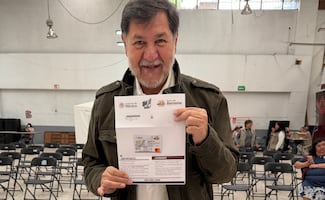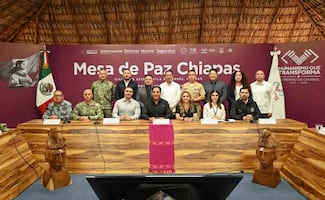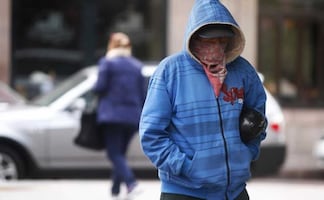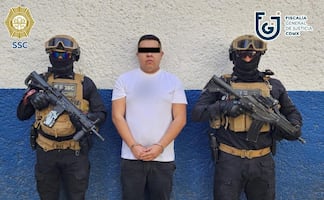Más Información
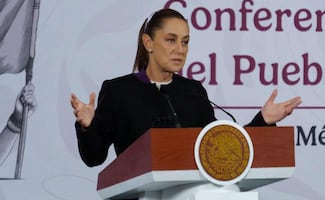
Alex Tonatiuh Márquez Hernández deja el cargo de director de la ANAM, revela Sheinbaum; es una decisión interna, dice
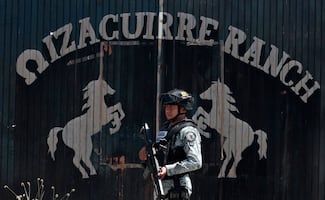
Ordenan suspender apertura de juicio de "El Lastra"; era el reclutador del CJNG y encargado del Rancho Izaguirre

Colectivos recuerdan lucha de Marisela Escobedo a 15 años de su asesinato, en Ciudad Juárez; realizan distintos eventos
The most recent forensic investigation of the southern Mexico garbage dump where the government says 43 students were incinerated did not confirm there was a fire there that night.
The report from international fire experts convened by the government was obtained by The Associated Press through an open records request. It shows the experts found evidence the Cocula dump had been the site of at least five fires, but could not determine when. Remains of 17 people were also found, but it was unknown when they were burned.
"The duration and dates of the fires could not be established based on the available physical data," the report said.
In April, when the Attorney General's Office and one of the fire experts publicized the findings, they said only that there was evidence of a large fire at the dump and that remains of at least 17 adults were found. They did not release the report itself, citing confidentiality, and left the impression the investigation supported the government's theory that the students were burned there.
The 43 students from a rural teachers college in Guerrero state were detained by local police in the city of Iguala on Sept. 26, 2014, and were turned over to a crime gang. After an initial investigation, the government said it had determined the "historical truth" and said all of the students were killed and their bodies were incinerated at the dump and then tossed into a river.
A team from the Inter-American Human Rights Commission, which spent months reviewing the government's investigation, had criticized the April presentation by the Attorney General's Office, suggesting it gave a false impression.
The nine-page report established that it drizzled the night the students were taken and the following morning. But the experts did not say whether the recorded rain amounts would have impeded a fire of the magnitude needed to incinerate 43 bodies.
There was no information about the identities of the 17 remains found, but it was known that the remote dump had become a place to dispose of bodies for some time in an area where hundreds have gone missing.
A previous forensic examination by the Argentine Forensic Anthropology Team, which worked the site alongside government investigators at the request of the students' families, confirmed that at least one set of the 17 remains at the dump did not belong to any of the missing students. It had a dental piece that none of the missing students had.
The latest forensic examination of the dump was organized by the government after previous investigations contradicted the official version of events. It was supposed to scientifically clarify where the students ended up, but created more argument because the government presented the findings as though they supported its theory.
At the presentation by the Attorney General's Office, fire expert Ricardo Torres said more tests were needed to determine whether 43 people could have been burned at the dump, but he added there had been a large controlled fire there and 17 sets remains were recovered. No more details were offered and questions were not taken.
The full report warned about the limitations of reaching any firm conclusion about the dump because it had not been guarded for a month.
"It is certainly plausible that unknown persons may have entered the site and/or contaminated the site," the report said.
The Argentine team had previously advised of shell casings that suddenly appeared at the site and were later touted by the government as evidence that the students were executed at the dump.
Before departing Mexico at the end of April, the team from the Inter-American Human Rights Commission urged the government to drop its theory and explore details in the investigation that point to other possible destinations for the students' remains.
Noticias según tus intereses
[Publicidad]
[Publicidad]






